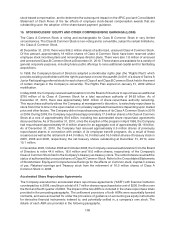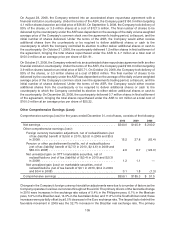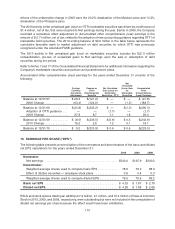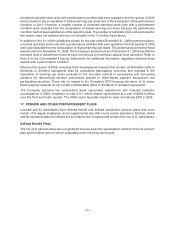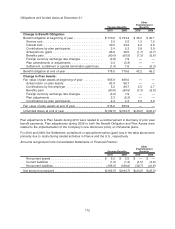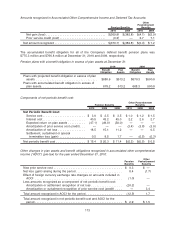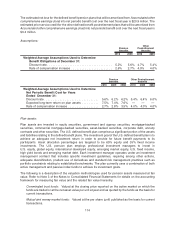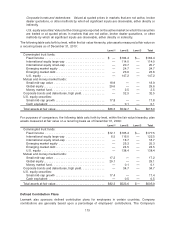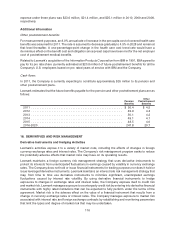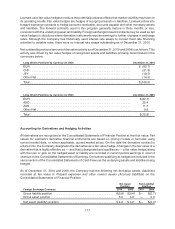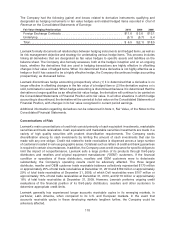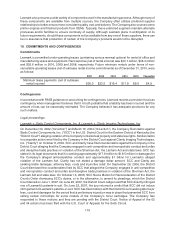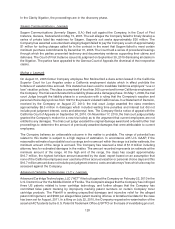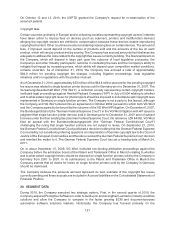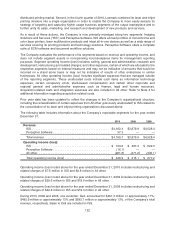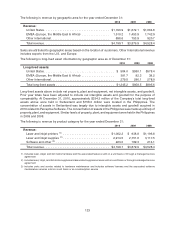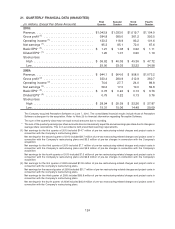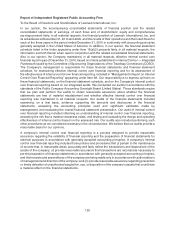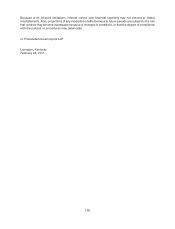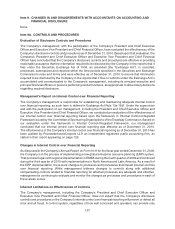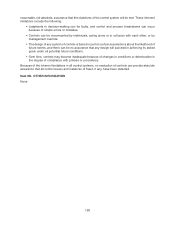Lexmark 2010 Annual Report Download - page 124
Download and view the complete annual report
Please find page 124 of the 2010 Lexmark annual report below. You can navigate through the pages in the report by either clicking on the pages listed below, or by using the keyword search tool below to find specific information within the annual report.
The Company had the following (gains) and losses related to derivative instruments qualifying and
designated as hedging instruments in fair value hedges and related hedged items recorded in Cost of
Revenue on the Consolidated Statements of Earnings:
Fair Value Hedging Relationships 2010 2009 2008
Foreign Exchange Contracts . . . . . . . . . . . . . . . . . . . . . . . . . . . . . . . . . . . $11.6 $ 3.6 $13.1
Underlying . . . . . . . . . . . . . . . . . . . . . . . . . . . . . . . . . . . . . . . . . . . . . . . . . (5.1) (5.7) 5.4
Total . . . . . . . . . . . . . . . . . . . . . . . . . . . . . . . . . . . . . . . . . . . . . . . . . . . . . . $ 6.5 $(2.1) $18.5
Lexmark formally documents all relationships between hedging instruments and hedged items, as well as
its risk management objective and strategy for undertaking various hedge items. This process includes
linking all derivatives that are designated as fair value hedges to specific assets and liabilities on the
balance sheet. The Company also formally assesses, both at the hedge’s inception and on an ongoing
basis, whether the derivatives that are used in hedging transactions are highly effective in offsetting
changes in fair value of hedged items. When it is determined that a derivative is not highly effective as a
hedge or that it has ceased to be a highly effective hedge, the Company discontinues hedge accounting
prospectively, as discussed below.
Lexmark discontinues hedge accounting prospectively when (1) it is determined that a derivative is no
longer effective in offsetting changes in the fair value of a hedged item or (2) the derivative expires or is
sold, terminated or exercised. When hedge accounting is discontinued because it is determined that the
derivative no longer qualifies as an effective fair value hedge, the derivative will continue to be carried on
the Consolidated Statements of Financial Position at its fair value. In all other situations in which hedge
accounting is discontinued, the derivative will be carried at its fair value on the Consolidated Statements of
Financial Position, with changes in its fair value recognized in current period earnings.
Additional information regarding derivatives can be referenced in Note 3, Fair Value, of the Notes to the
Consolidated Financial Statements.
Concentrations of Risk
Lexmark’s main concentrations of credit risk consist primarily of cash equivalent investments, marketable
securities and trade receivables. Cash equivalents and marketable securities investments are made in a
variety of high quality securities with prudent diversification requirements. The Company seeks
diversification among its cash investments by limiting the amount of cash investments that can be
made with any one obligor. Credit risk related to trade receivables is dispersed across a large number
of customers located in various geographic areas. Collateral such as letters of credit and bank guarantees
is required in certain circumstances. In addition, the Company uses credit insurance for specific obligors to
limit the impact of nonperformance. Lexmark sells a large portion of its products through third-party
distributors and resellers and original equipment manufacturer (“OEM”) customers. If the financial
condition or operations of these distributors, resellers and OEM customers were to deteriorate
substantially, the Company’s operating results could be adversely affected. The three largest
distributor, reseller and OEM customer trade receivable balances collectively represented $170 million
or approximately 25% of total trade receivables at December 31, 2010 and $189 million or approximately
29% of total trade receivables at December 31, 2009, of which Dell receivables were $107 million or
approximately 16% of total trade receivables at December 31, 2010, and $116 million or approximately
18% of total trade receivables at December 31, 2009. However, Lexmark performs ongoing credit
evaluations of the financial position of its third-party distributors, resellers and other customers to
determine appropriate credit limits.
Lexmark generally has experienced longer accounts receivable cycles in its emerging markets, in
particular, Latin America, when compared to its U.S. and European markets. In the event that
accounts receivable cycles in these developing markets lengthen further, the Company could be
adversely affected.
118


